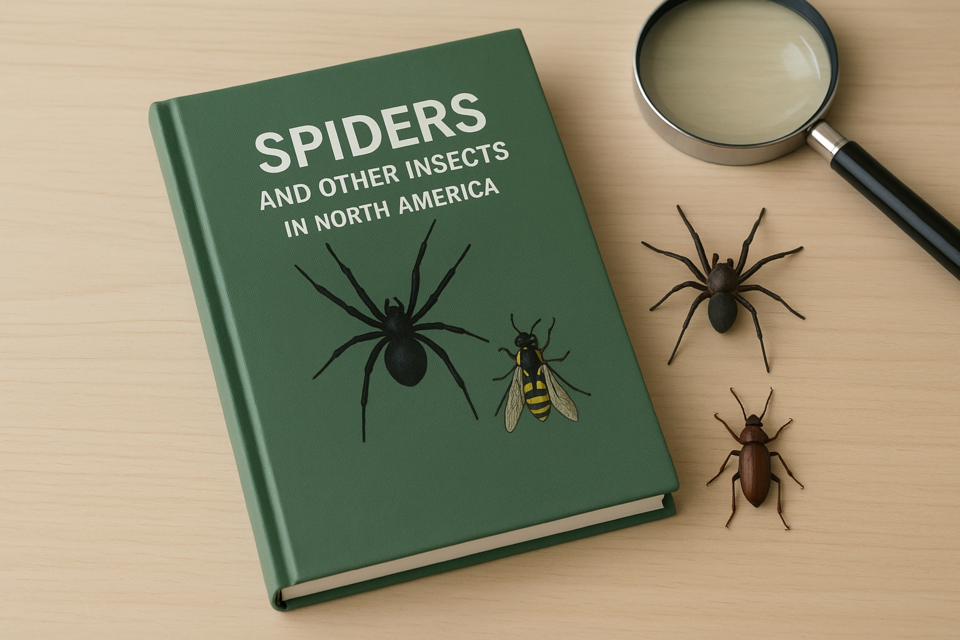Spiders and Other Insects in North America
Explore the Intriguing World of North American Spiders and Insects!

5 Hours average completion time
0.5 CEUs
12 Lessons
13 Exams & Assignments
13 Reference Files
103 Articles
Mobile Friendly
Last Updated December 2025
Dive into the mesmerizing and mysterious realm of insects and spiders with our captivating course, "Spiders and Other Insects of North America." Imagine yourself as an intrepid explorer, a curious adventurer, navigating through the densely populated but often overlooked world right beneath your feet. This course is a journey, a transformation, a new lens through which you will see the world. Whether you've always had an affinity for these remarkable creatures or you've approached them with a mix of awe and anxiety, this course promises to redefine your understanding and appreciation of the tiny architects of our ecosystems.
Every corner of North America presents a stage where the drama of life unfolds -- spiders spinning intricate webs, beetles marching industriously, and butterflies painting the sky with their magnificent wings. This course allows you to be a part of this vibrant living tapestry. Consider it a unique expedition into your own backyard, where each participant not only gains knowledge but also collects stories that enchant and educate.
Are you someone who craves knowledge about the natural world? Do you wish to break down the walls of misconception that may have held you back from appreciating these creatures? This course warmly welcomes you, making the unfamiliar become not just familiar, but fascinating. By the end of our journey together, you'll be equipped to lead engaging conversations about the ecosystems these creatures dwell in--whether you're talking to an audience of peers, presenting at a local community meeting, or simply chatting with friends and family.
Your initial hesitation might stem from a common discomfort around insects and arachnids, but we are here to provide a gentle yet enthusiastic nudge towards understanding. Through a seamless blend of immersive storytelling and meticulous science, we will explore the indispensable roles these creatures play, transforming fear into fascination and trepidation into triumph.
Imagine walking through a sunlit park, now equipped with an understanding of the crucial jobs performed by the insects buzzing around you. Picture confidently identifying the spider building a temporary home adjacent to your windowsill, drawing upon the rich knowledge you've accrued to explain its significance to an intrigued onlooker. This course will empower you with these skills.
Our approach is holistic, encompassing not just the scientific aspects but the intricate stories that each creature tells. We unravel age-old myths and dispel fears rooted in misunderstanding. With a focus on the different ecosystems, from the verdant Pacific Northwest to the arid landscapes of the Southwest, you'll engage with a well-rounded perspective of how diverse habitats nurture diverse life forms.
Moreover, you'll learn about the art of coexistence -- an essential skill in an increasingly environmentally conscious world. We delve into the safety protocols for living harmoniously with the more intimidating members of the insect and spider community, providing knowledge that meets curiosity with caution and turns apprehension into attentiveness.
Consider this course your personal guide to the unseen, bringing the intricate dance of ecology right to your doorstep. As you journey through each module, you'll feel a growing connection with these often-misunderstood creatures, equipped with insights that will pique your curiosity further, perhaps inspiring you to pursue deeper involvement with wildlife or conservation efforts.
The commitment is yours, and the journey promises to be magnificent. With each lesson, you'll venture further into understanding the captivating world of insects and spiders, emerging with a newfound perspective of respect and admiration. When you choose to enroll in "Spiders and Other Insects of North America," you're not just taking a course; you're choosing to see the world in a way few ever have and becoming part of a growing community of informed, passionate naturalists. So take the leap--the natural wonders of North America await your discovery, and their secrets are yours to unveil.
- Myth dispelling and fear reduction
- Coexisting with spiders in diverse ecosystems
- Recognizing and addressing entomophobia
- Understanding ecological roles of insects
- Ecosystem appreciation and knowledge
- Exploring insect and arachnid behavior and habitats
- Analyzing regional biodiversity and adaptations
- Safety protocols for living with insects
- Effective engagement and presentation skills
- Nature observation and exploration skills
- Identifying diverse insect and arachnid species
-

Cat Care and Training 101
-

Biology 360: From Molecules to Ecosystems
-

Snakes of the Western Hemisphere
-

Dog Grooming 101
-

Butterflies
-

Landscaping 101
-

Dog Training All-In-One Course Bundle
-

Pet Sitting & Dog Walking Business
-

Dog Psychology 101
-

Dog & Cat First Aid, Care & Maintenance
-

Lush Horizons: Tropical Gardening for Beginners
-

Introduction to Gardening
-

Vegetable Gardening 101
